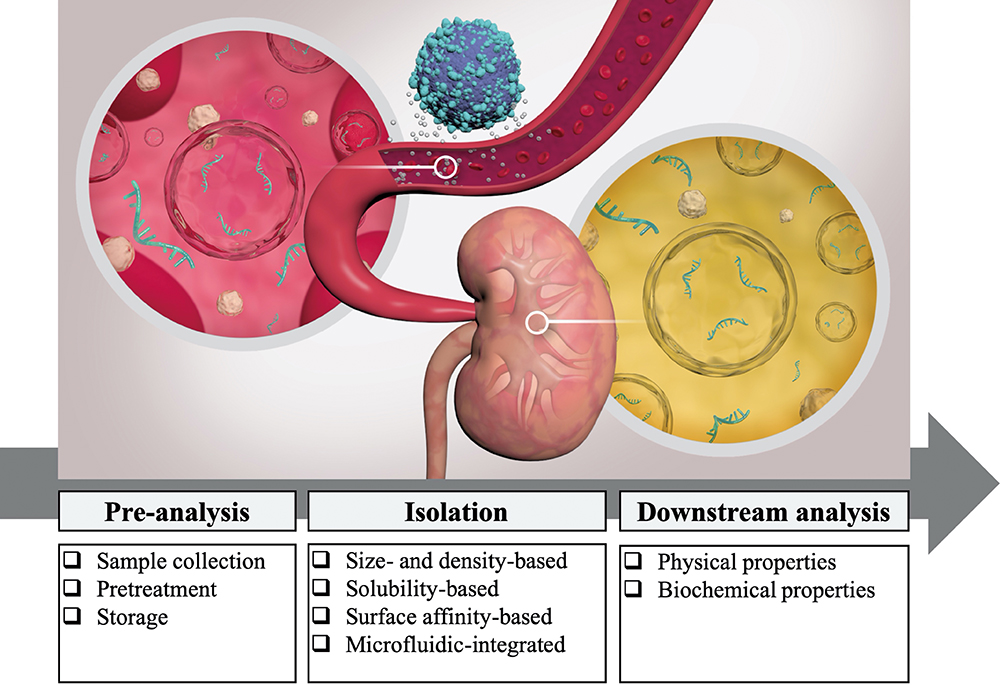- 著者
- Xiaoyin SUN Takao YASUI Takeshi YANAGIDA Noritada KAJI Sakon RAHONG Masaki KANAI Kazuki NAGASHIMA Tomoji KAWAI Yoshinobu BABA
- 出版者
- (社)日本分析化学会
- 雑誌
- Analytical Sciences (ISSN:09106340)
- 巻号頁・発行日
- vol.33, no.6, pp.735-738, 2017-06-10 (Released:2017-06-10)
- 参考文献数
- 10
- 被引用文献数
- 1
Here, we developed a device integrated with a nanochannel and nanostructures to slow DNA translocation velocity. We found that translocation velocity of a single DNA molecule inside a nanochannel was decreased by pre-elongating it using some nanostructures, such as a shallow channel or nanopillars. This decrease of the translocation velocity was associated with the DNA mobility change, which is an intrinsic parameter of DNA molecules and unaffected by an electric field.
- 著者
- Piyawan PAISRISARN Takao YASUI Yoshinobu BABA
- 出版者
- The Japan Society for Analytical Chemistry
- 雑誌
- Analytical Sciences (ISSN:09106340)
- 巻号頁・発行日
- vol.36, no.7, pp.791-798, 2020-07-10 (Released:2020-07-10)
- 参考文献数
- 98
- 被引用文献数
- 4
Extracellular vesicles (EVs) play an important role in cell-to-cell communication by carrying molecular messages that reflect physiological and pathological conditions of the parent cells. EVs have been identified in all body fluids; and among them, urine stands out as a sample that is easy and inexpensive to obtain and can be collected over time to monitor changes. Various protocols have been established to study urinary extracellular vesicles (UEVs) and they have shown great potential as a biomarker source for clinical applications, not only for urological, but also non-urological diseases. Due to the high variability and low reproducibility of pre-analytical and analytical methods for UEVs, establishing a standardized protocol remains a challenge in the field of diagnosis. Here, we review UEV studies and present the techniques that are most commonly used, those that have been applied as new developments, and those that have the most potential for future applications. The workflow procedures from the sampling step to the qualitative and quantitative analysis steps are summarized along with advantages and disadvantages of the methodologies, in order to give consideration for choosing the most promising and suitable method to analyze human UEVs.
1 0 0 0 OA Self-assembled Nanowire Arrays as Three-dimensional Nanopores for Filtration of DNA Molecules
- 著者
- Sakon RAHONG Takao YASUI Takeshi YANAGIDA Kazuki NAGASHIMA Masaki KANAI Gang MENG Yong HE Fuwei ZHUGE Noritada KAJI Tomoji KAWAI Yoshinobu BABA
- 出版者
- (社)日本分析化学会
- 雑誌
- Analytical Sciences (ISSN:09106340)
- 巻号頁・発行日
- vol.31, no.3, pp.153-157, 2015-03-10 (Released:2015-03-10)
- 参考文献数
- 23
- 被引用文献数
- 3 12
Molecular filtration and purification play important roles for biomolecule analysis. However, it is still necessary to improve efficiency and reduce the filtration time. Here, we show self-assembled nanowire arrays as three-dimensional (3D) nanopores embedded in a microfluidic channel for ultrafast DNA filtration. The 3D nanopore structure was formed by a vapor-liquid-solid (VLS) nanowire growth technique, which allowed us to control pore size of the filtration material by varying the number of growth cycles. λ DNA molecules (48.5 kbp) were filtrated from a mixture of T4 DNA (166 kbp) at the entrance of the 3D nanopore structure within 1 s under an applied electric field. Moreover, we observed single DNA molecule migration of T4 and λ DNA molecules to clarify the filtration mechanism. The 3D nanopore structure has simplicity of fabrication, flexibility of pore size control and reusability for biomolecule filtration. Consequently it is an excellent material for biomolecular filtration.
